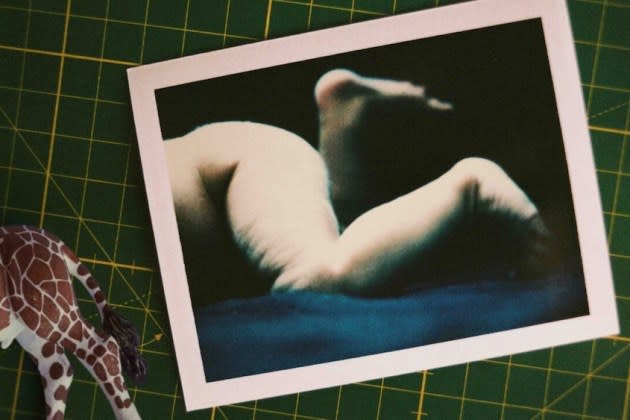'Life and Other Problems' Review: Big on Questions, Short on Insights

Documentaries, by their very nature, are driven by curiosity. Nonfiction filmmakers arrive at their subjects — be they people, places or events — with a wide-eyed sense of wonder. But as Max Kestner’s “Life and Other Problems” attests, curiosity can only take you so far. Ostensibly structured around the director’s interest in big questions about life and consciousness, this journey through philosophy, biology, and evolution never quite brings its many-pronged interrogations into a cohesive whole. Eager to posit that we are no different from the microbes that live within us — or the animals we keep in zoos — the documentary never does more than meander around its many provocative questions.
The precipitating incident at the start of Kestner’s film is a global headline-grabbing moment from 2014. That’s the year the Copenhagen Zoo decided to euthanize Marius, a 2-year-old giraffe under their care. Clearly rankled by the incident and the issues it brought up about what kind of lives are valued, the filmmaker quickly introduces us to Bengt Holst, the then-scientific director of Copenhagen Zoo who explains his reasoning for ending Marius’s life. Genetically, there was no need to keep Marius alive; he was “surplus.” The giraffe population in captivity would not feel his absence. And so, while various zoos and conservationists around the world jockeyed for Holst and the zoo to allow Marius to live, Holst stood by his decision and explains it in rather clinical terms for Kestner’s camera.
More from Variety
What we might term the “Marius incident” is presented as the reason why Kestner has set off to work through what’s both a simple and an extremely complicated question. Namely: What is life? “Life, perhaps, begins somewhere in the vicinity of birth,” he posits early on in the doc in the papered voiceover that runs through much of the film. “Life, perhaps, ends somewhere in the vicinity of death.” His self-guided inquiry leads him to speak with professors of ecology and evolution, to marine and microbiologists, to neuroscientists and thinkers concerned with animal and human consciousness. Their conversations are somewhat interesting, and oftentimes quite engaging. But throughout, there is a slight disconnect between the issues Marius and his death bring up and these more deeply philosophical ideas around what constitutes life.
Shuttling back and forth between the two is more jarring than illuminating. The Marius incident called into question animal rights issues, speciesism, the ethics of zoos and even the Disneyfied way in which death and violence are often erased from our understanding of the animal kingdom. But Kestner insists, instead, on plumbing more abstract depths though seemingly connected questions. He ponders aloud about free will, about the “mystery of life,” about the “life force” that runs through all living beings. He spends much of the doc quoting Maurice Maeterlinck’s 1907 book, “The Intelligence of Flowers.” There is, perhaps, consciousness at work — in flowers, in fungi, in animals.
The eclectic group of experts Kestner interviews could, under a more rigorous set of eyes, could frame a fascinating discussion. Instead, wanting to have all these disparate elements and interdisciplinary queries speak to one another leaves Kestner asking questions to his interviewees like, “Is the giraffe related to microbes, like we are?” in response to a rather provocative proposition about how it’s hard to set a cut-off threshold, scientifically at least, between what’s alive or not.
Marius keeps getting in the way, especially since his death (and public dismemberment at the zoo) feels of a different kind than the discussions Kestner ends up having with experts on evolutionary biology and cellular consciousness. And the filmmaker’s continued interest in claiming a kind of continuum between small organisms and humans, between millennia-old genes and our own, between what’s long died and what remains alive ends up sounding quite inane.
Such a fractured approach to so far-reaching and long-simmering questions — which biology, philosophy, and ethics have grappled with for centuries — is felt visually in the film as well. Whenever the focus returns to Marius, “Life and Other Problems” looks like a news-heavy archival piece (which ends up including Jeanine Pirro segments). Broadcast segments and newspaper headlines, not to mention one-on0one interviews with those involved keep those sections feeling quite sterile, more chronicle than inquiry. Compare that to the vast vistas of arid landscapes, lush forests and forceful oceans that play backdrop to Kestner’s chats with scientists, many of which still find us talking in labs and research centers.
Kestner’s curiosity is ravenous. It’s clear throughout that what guides him is a wild appetite for tackling key questions about our place in the world. His childlike wonder drives the doc to intriguing places, but there’s not enough rigor here to bring any one insight into clear focus, only an unwieldy thesis about life (and capital-L Life, of course) that gets more and more diffuse the longer Kestner speaks. The effect is less that of a quilted mosaic than that of a slapdash attempt to stitch together semi-related sources with little in the way of an organizing principle.
Best of Variety

 Yahoo News
Yahoo News 